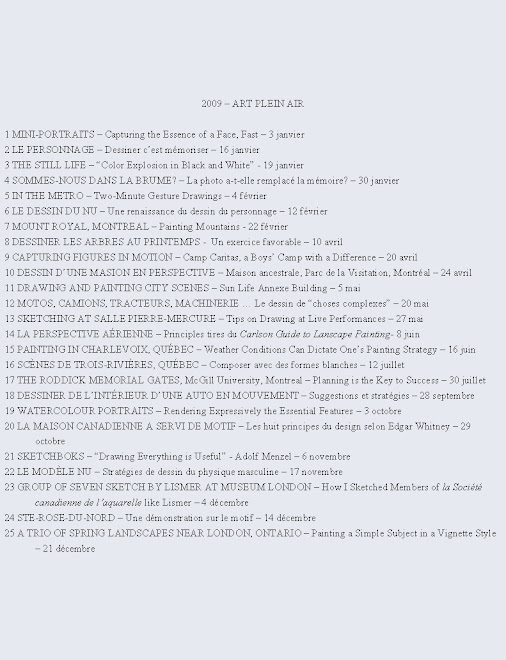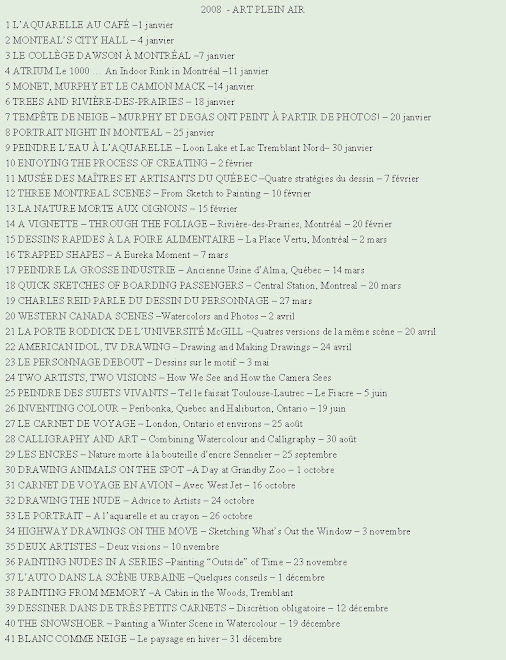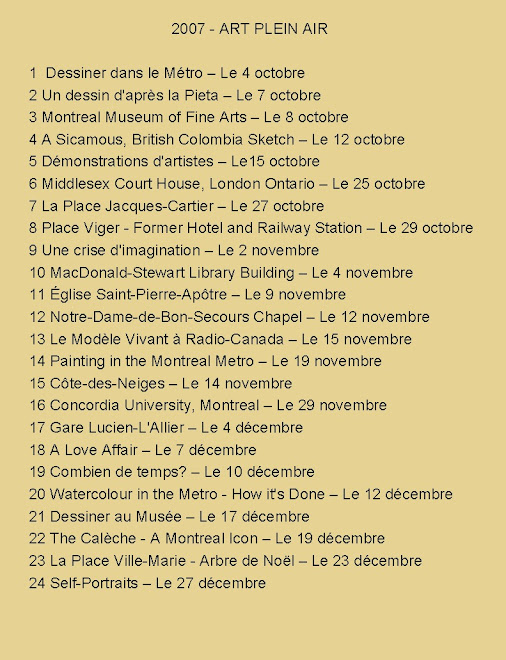 The time you think you need versus the time you actually need.
The time you think you need versus the time you actually need.A favorite painting subject, the Gates at the entrance to McGill University, was painted in thirty minutes. “Most people do not paint to deadlines, unless working on a commission. The natural inclination is to take all the time you have at your disposal, and there may appear to be no reason not to. But the time you think you need, compared to the time you actually need, may be quite different.” Gerald Green in The Artist magazine, May 2009.
Sketching in ink immediately
Sometimes fast is better and this was the case as no sooner had I sketched in the figures in ink standing in front of the gates that the students left and returned just as I was finishing the painting. The advantage of sketching the bones of a scene in ink is that the permanency of ink influences one to simplify and draw precisely. With a brush and pan watercolors I loosely added colored shapes using the line drawing as a guide.
How I approach “field work”
I feel it is important before starting to know clearly what one intends to do. Some questions I ask myself are: How long do I intend to paint the scene? Will I be disturbed where I stand or sit? What format should I use? What should I draw first? Should I paint a vignette or fill the whole page? Where is the light source? And finally, what attracted me to paint or sketch the scene?
I design mentally
For many years I drew preparatory “thumbnail” sketches. Now, I prefer to design mentally especially when painting a scene including the people or vehicles which can move away. Spending too much time on a preliminary small sketch might mean loosing precious time. There is no right or wrong way to plan before starting a painting. However, it is important to have a “plan” whether mental or on paper and to stick to it. In other words, be confident, have faith in your idea throughout.
Directing the viewer into the picture
It is important to lead the viewer into the scene. The two white lines painted on the pavement at bottom left point to the people walking towards us. They in turn direct us towards the group of blue figures. The horizontal beam of the gate at right directs us to the cluster of balloons which send us back to the figures. The base of the clock tower is at the center of interest. Finally, the posts at left prevent us from “walking” off the scene.
Directing the viewer into the picture
It is important to lead the viewer into the scene. The two white lines painted on the pavement at bottom left point to the people walking towards us. They in turn direct us towards the group of blue figures. The horizontal beam of the gate at right directs us to the cluster of balloons which send us back to the figures. The base of the clock tower is at the center of interest. Finally, the posts at left prevent us from “walking” off the scene.

Suggest, don’t say everything
It is important to be selective and leave room for the viewer to interpret. Here, subtle contour lines of heads and spots of light suggest the interaction of students. The unpainted whites in and around the blue shirts suggest arm and hand position. The yellow spots of paint at right suggest objects or food on the table. I have hinted at architectural details here and there. Finally, the foliage is represented by loosely placed dabs of green, blue and yellow paint.

Strategically plan your whites from the start
Watercolorists know that it is very important to “plan” whites. If the whites are mistakenly painted over it is very difficult to go back and retrieve them. I made sure I carefully painted negatively around the white shapes – the tents, one side of the clock tower, the lamp post, the white street signs, the lines on the pavement, and the whites around the people.

Like athletes, artists should visualize
The next time you see a group of people standing around interacting why not draw them quickly before they disperse. If you mentally visualize the key elements before starting then you are planning for success. Athletes visualize before performing. Artists should do likewise.
Raynald Murphy sca








